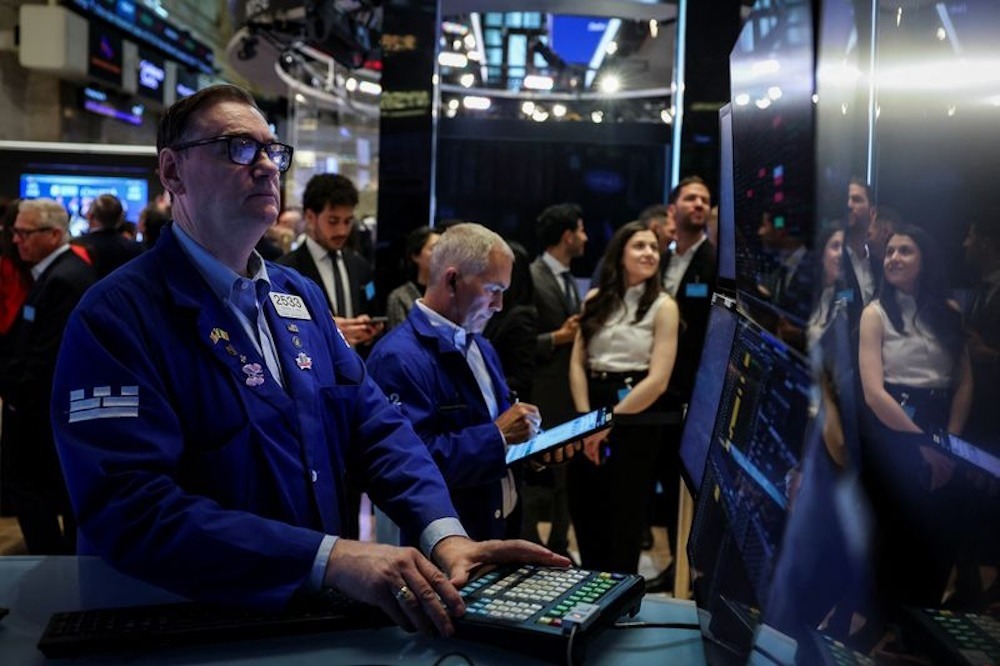
Nasdaq Futures concluded the week at unprecedented levels on Friday, buoyed by favorable advancements in U.S.-China trade discussions. Furthermore, subdued inflation figures have heightened market participants’ anticipations for an additional series of interest rate reductions by the Federal Reserve this week. All three major stock indexes concluded the trading session in positive territory. The Dow Jones Industrial Average advanced 0.7% or 337.47 points to close at 47,544.59, marking a new record close. Significantly, 21 of the 30 components of the index concluded in positive territory, whereas nine ended in negative territory. At the intraday high, the blue-chip index reached a historic 47,564.52. The tech-heavy Nasdaq Composite concluded at 23,637.46, reflecting a 1.9% increase or 432.59 points, propelled by the robust performance of leading AI semiconductor firms. This represented a new peak closing for the index. At the intraday high, the tech-laden index reached a historic level of 23,658.66.
The major gainer of the index was QUALCOMM Inc. The share price of the semiconductor giant surged by 11.1% following the announcement of a new AI chip designed for data centers. The S&P 500 appreciated 1.2% to finish at 6,875.16, marking its inaugural close above the significant technical threshold of 6,800. At the intraday high, the broad-market index reached a historic 6,877.28. The benchmark concluded in positive territory for the third consecutive day. Among the 11 broad sectors of the market index, 10 concluded in positive territory, whereas one remained in negative territory. The Communication Services Select Sector SPDR rose 1.4%, the Consumer Discretionary Select Sector SPDR increased by 1.4%, and the Technology Select Sector SPDR advanced by 1.9%, respectively. The fear gauge, the CBOE Volatility Index, experienced a decline of 3.5%, settling at 15.79. On Monday, the trading volume reached 19.76 billion shares, which is below the 20-session average of 20.85 billion shares. On the NYSE, the ratio of advancers to decliners stood at 1.74-to-1. On Nasdaq, a ratio of 1.21-to-1 indicated a preference for advancing issues.
The S&P 500 observed 37 new 52-week highs alongside three new 52-week lows. The Nasdaq Composite recorded 132 new 52-week highs alongside 57 new 52-week lows. On October 27, President Donald Trump expressed his anticipation that the United States and China would reach a trade agreement after his upcoming meeting with Chinese Premier Xi Jinping on October 29 in South Korea. Trump expressed, “I have a lot of respect for President Xi, and we are going to come away with the deal.” This month witnessed an escalation in the trade conflicts between the United States and China. On Oct. 9, China’s Ministry of Commerce issued a notification mandating that all foreign companies secure a license to export products from China that contain more than 0.1% of rare earth minerals, regardless of whether these minerals are sourced from China or produced using Chinese extraction, refining, magnet-making, or recycling technology.
The new regulation is set to take effect on December 1. China accounts for approximately 70% of the global supply of rare earth minerals, which are essential for the functioning of modern high-tech industries. The United States stands as a significant importer of rare earth minerals, which are deemed highly valuable and essential inputs for the semiconductor, defense, and automobile sectors. On Oct. 10, the U.S. government responded by imposing an additional 100% tariff on Chinese exports to the nation, supplementing the tariffs that have already been enacted on these products. Currently, the average tariff on Chinese goods in the United States stands at 40%. The new tariff of an additional 100% will take effect on November 1. Following the publication of favorable CPI data for September, market participants are anticipating additional interest rate reductions this year. Reports indicates a 97.8% likelihood of a 25 basis point reduction in the Fed fund rate in October, alongside a 92.8% probability of an additional 0.25% decrease in December.
